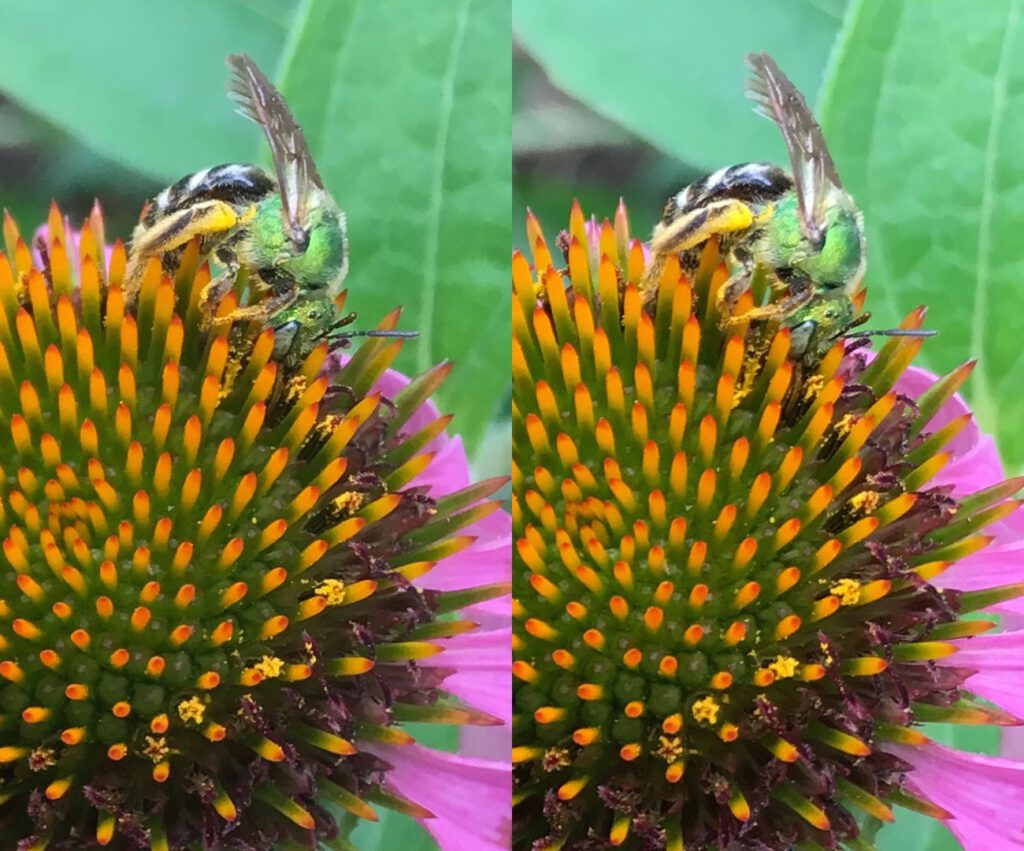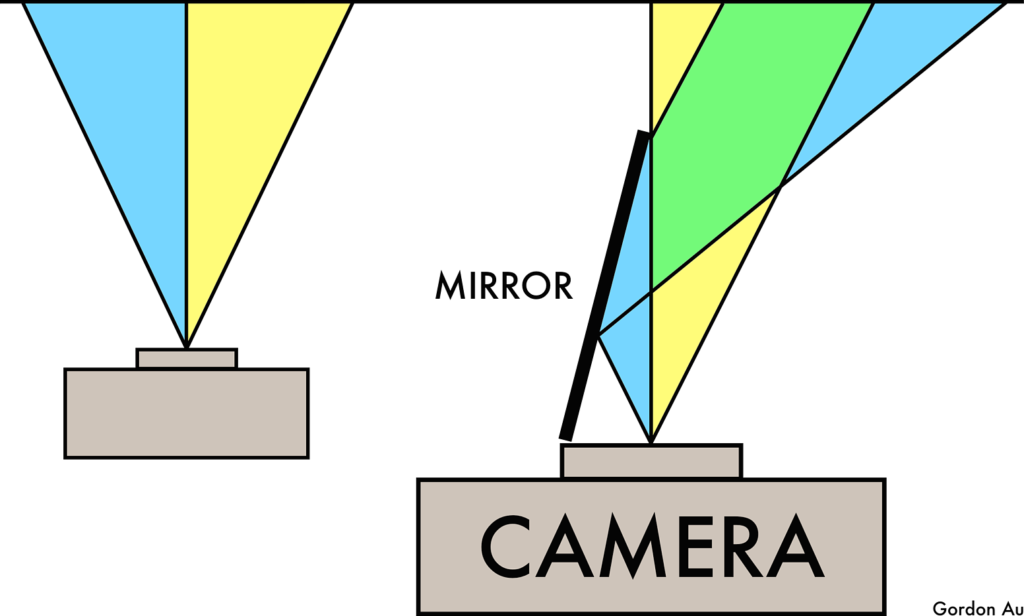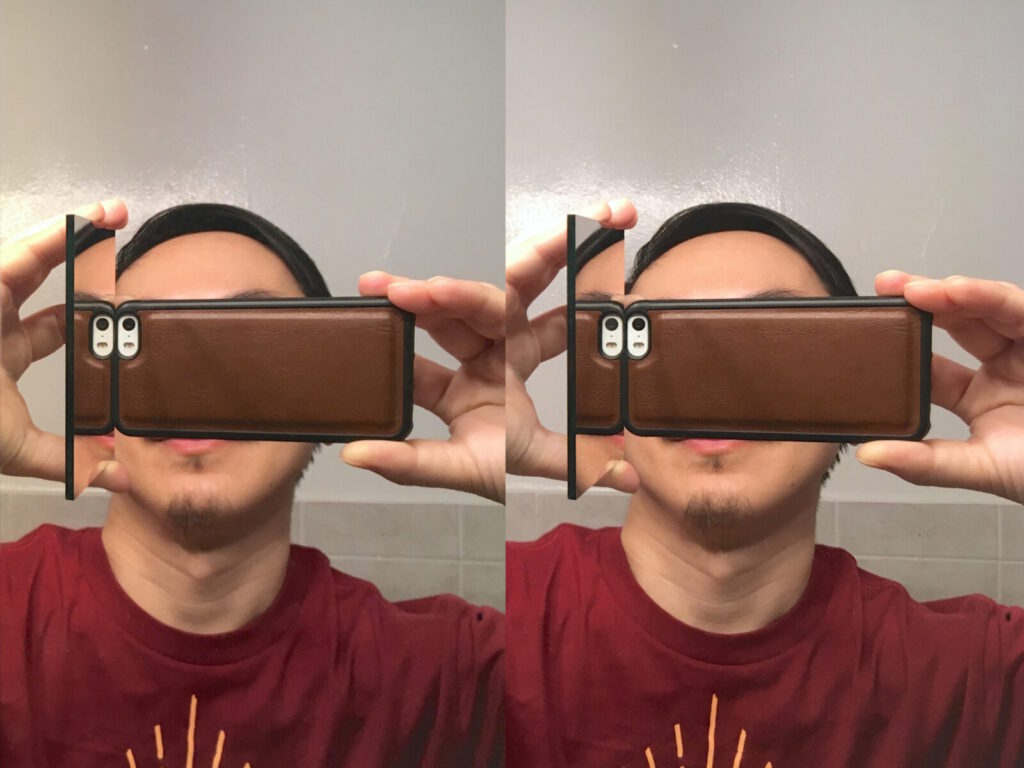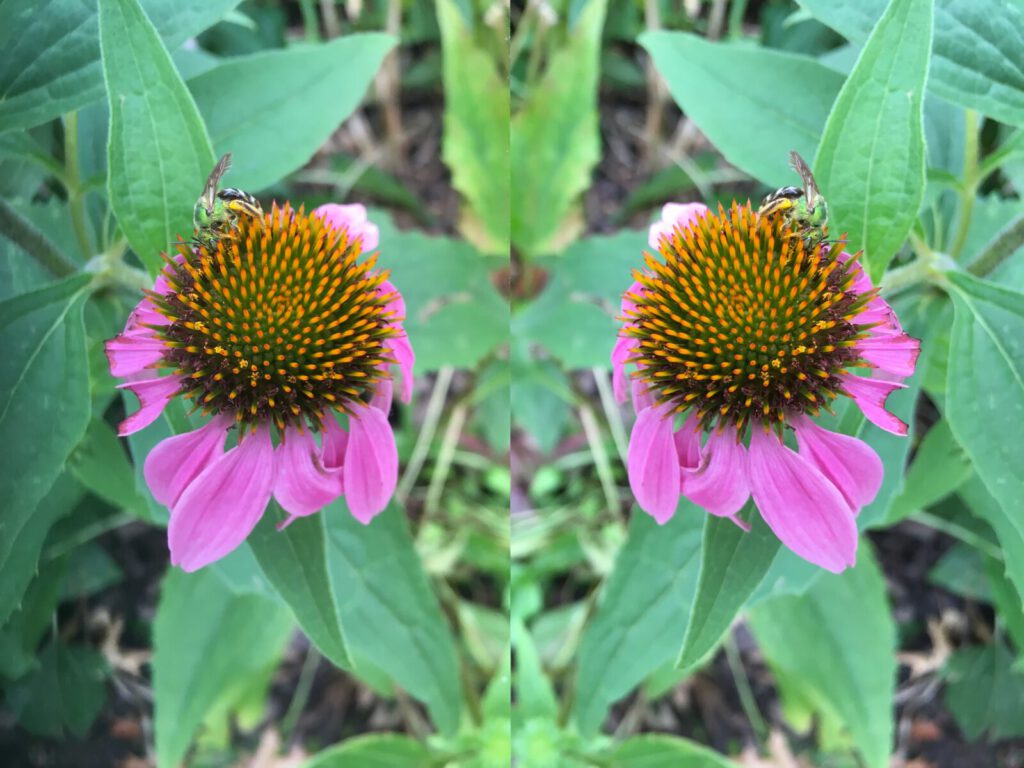Getting started with Catadioptric stereos (Mirror stereos)
written for the stereosite by Gordon Au, USA
If you already take stereophotos using the sequential (‘cha-cha’) method with your phone or camera, you’re undoubtedly aware of its limitations: your main subject has to remain perfectly still; people and cars moving in the background create discrepancies; changing light between shots is a problem; windy days can be impossible. However, you may or may not know that adding a small handheld mirror to your stereo arsenal can help you overcome many of these problems. With the mirror reflecting half of the camera’s view, you can capture an entire stereopair in a single shot, eliminating timing-related issues. Though it depends on the mirror and camera(lens), this is usually best for close-up shots:
This figure shows the basic principle: the mirror reflects one half of the camera’s view (in blue) over to the opposite side, where it overlaps with the other half view (in yellow). For everything in the green overlap area, you get 2 different views—stereopair potential! Technically, a system that combines a mirror and lens like this is called catadioptric.
The trickiest part of taking catadioptric stereos is positioning and holding the mirror. The basic steps are:
- Bring the vertical mirror right up to the camera lens (but not touching it!).
- Move the mirror to the side, until the near edge is no longer visible to the camera.
- Tilt the far edge of the mirror back towards the center, until approximately half the camera view is reflected.
You can do this on either side — whichever is more comfortable.
When you start out, you will need to fine-tune the mirror position and tilt. I recommend taking a series of test shots, using the same subject (at ~1–2 mirror lengths away), and with different combinations of mirror positions and tilts:
- Shot #1: mirror 0mm from lens edge / 40% of view reflected
- Shot #2: mirror 0mm from lens edge / 50% of view reflected
- Shot #3: mirror 0mm from lens edge / 60% of view reflected
- Shot #4: mirror 3mm from lens edge / 40% of view reflected
- Shot #5: mirror 3mm from lens edge / 50% of view reflected
- Shot #6: mirror 3mm from lens edge / 60% of view reflected
- Shot #7: mirror 6mm from lens edge / 40% of view reflected
- (And so on…)
To process the shots, simply:
- Straighten if necessary, so the mirror edge is perfectly vertical.
- Separate the two images.
- Un-reflect (horizontally flip) the mirror image.
- Edit the two images as you would for any stereopair.
I recommend using StereoPhoto Maker’s auto-align function
After processing, go back to your notes, and see which combination of mirror position and tilt worked the best. (What amount of depth do you prefer? Which stereopairs turn out the cleanest?) You might want to follow up with more test shots of subjects at different distances.
Beyond ‘getting started,’ there are further details worth discussing about mirror stereos, including the ideal mirror (size; shape; type: a front surface mirror (first surface mirror), which you can find on Ebay), precise processing (cropping, matching size and focus, correcting for keystone distortion), history and theory, and more. Learn about some of these in “DIY Catadioptric Stereos” a video tutorial I made for the National Stereoscopic Association’s 3D-Con 2020. Also, check out the corresponding gallery and see #catadioptricstereo on Instagram for example shots.
Feel free to send questions through my website WorldOfDepth.com, or via Instagram. Have fun experimenting, and I look forward to seeing your mirror stereos!
Gordon Au (New York, USA)
I am an avid stereographer and 3D experimenter/tinkerer, making stereophotos, stereovideos, anaglyphs, extractions, and conversions, drawing upon a variety of sources, including TV and film, artwork, NASA data, found footage, and more. My experiments include catadioptric stereos, artificial intelligence, slices and shapes, asymmetric framing, video panning / zooming of 3D stills, x‑rays and fog as depth map sources, and more. I am a proud member of and have presented and/or written for the VSC, New York Stereoscopic Association, LA3D, the NSA, and the ISU.
Website: WorldOfDepth.com
Instagram-profile: WorldOfDepth
YouTube-profile: WorldOfDepth





